"All the best experiences are at the end of a long hard climb - Six days in the snowy mountains of Idaho learning more wilderness medicine."
As new friends, we all scurried around Ketcum, Idaho looking for breakfast in the pre-dawn chill. We then geared up, loaded up, and headed out to our trailhead. We donned skis and skins and started out into a foot of fresh Idaho powder. Immediately awaiting us was a buried avalanche beacon, which we were promptly asked to locate. Joe St. Onge, owner of Sun Valley Trekking and mountain man extraordinaire, and Chris Marshall, Mountain Guide, Avalanche Professional, and superb photographer, expertly debriefed us and reminded us about the precepts of safe travel in avalanche country. As we looked around us, there was plainly visible a few hundred yards away a fresh slide of the overnight snow. It was about to get real!
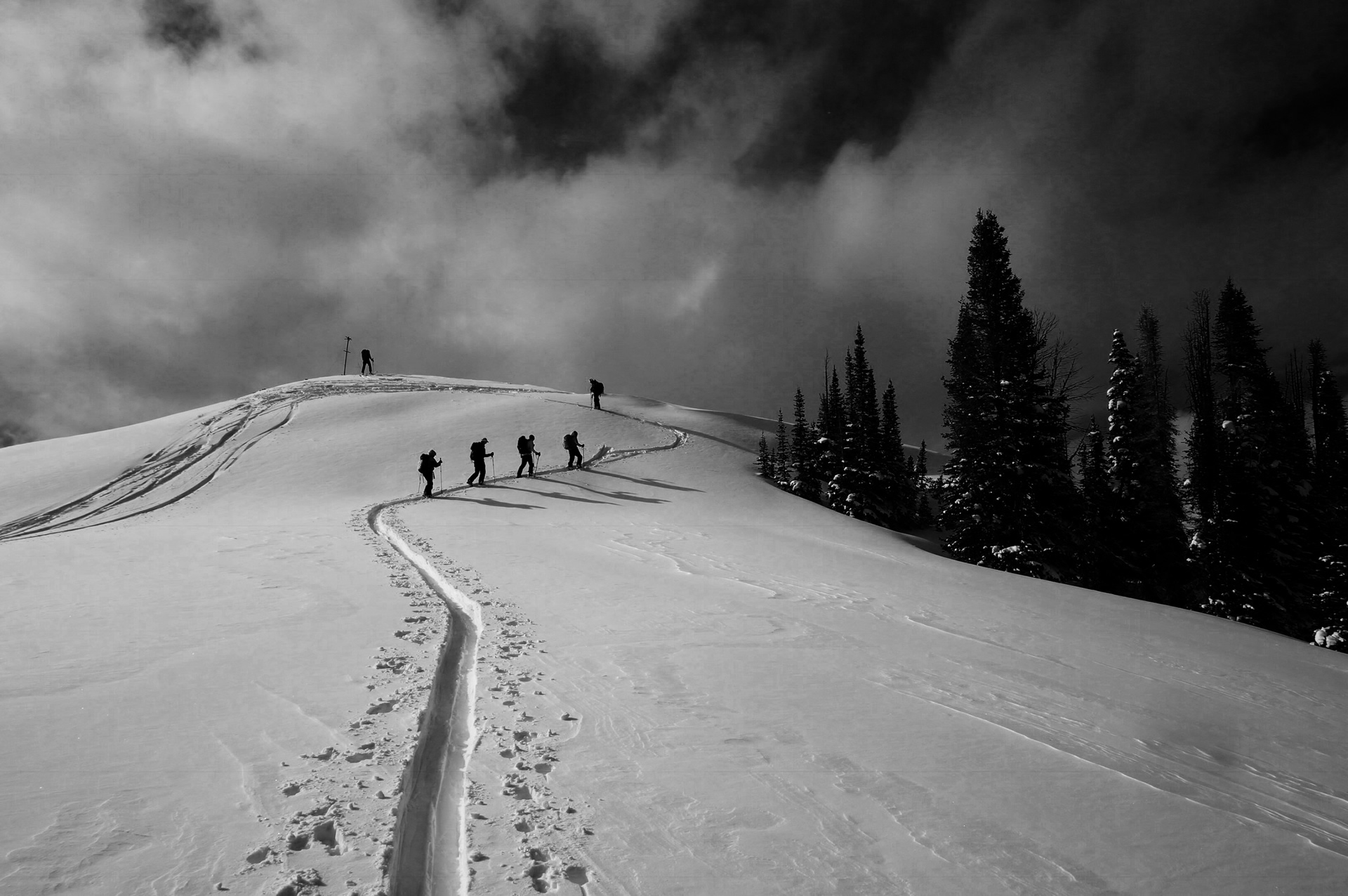
Photo courtesy of Jim Schultz, MD
Day One
Our first day was, I thought, a 3.5-4 mile, 1,800-foot skin up to the Tornak Hut in Idaho’s Smoky Mountains. It was a long grind in cold damp air and we were all sweating despite temperatures in the high teens. I breathed a sigh of relief as we came close to the hut, but I should have known better. This was a DiMM (Diploma in Mountain Medicine) refresher course after all! Never in the history of DiMM have we ever stopped when I was expecting to; there is always something more to see, learn, do, or practice. Wearily bypassing the hut, we climbed up a local peak called The Mighty Tornak. We then skied down (and climbed back up from) three runs before finally collapsing into the warm hut.
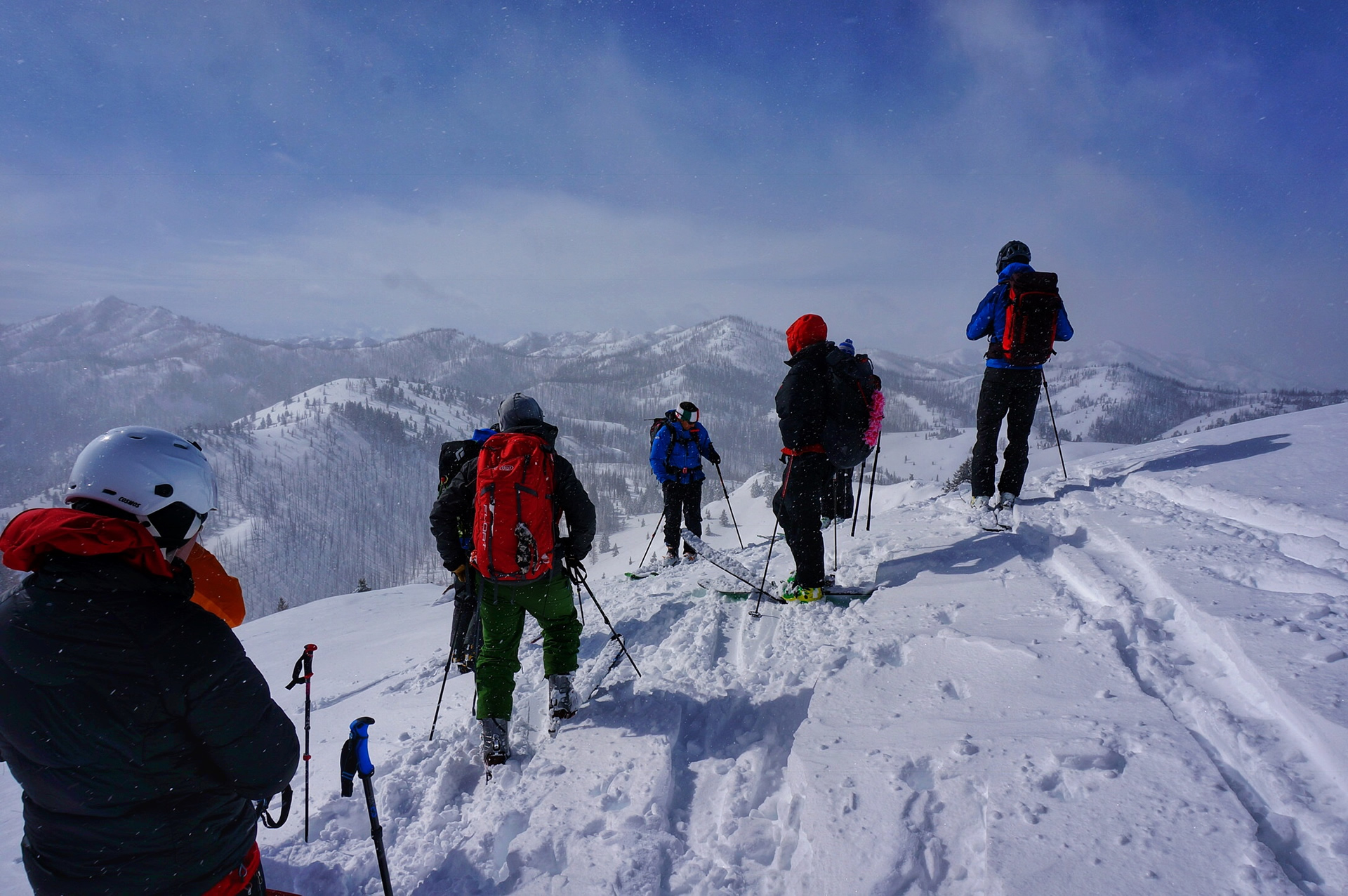
Photo courtesy of Jim Schultz, MD
Joe, Chris, Jess, and Everett from Sun Valley Trekking then prepared a feast that seemed to go on forever and was Michelin rated (er, well, in the Michelin ‘Hut’ section). This was a recurring theme throughout the week – hot delicious gourmet food prepared with fresh ingredients in the middle of the cold forest. Another part of the experience was a nice warm yurt with a sauna as well! It kind of felt like cheating. I am sure we have brought shame on the giants of wilderness medicine who have suffered in caves, hung on ledges, and stayed out benighted for days on end in blizzard conditions or desiccating in a desert somewhere. Oh well.
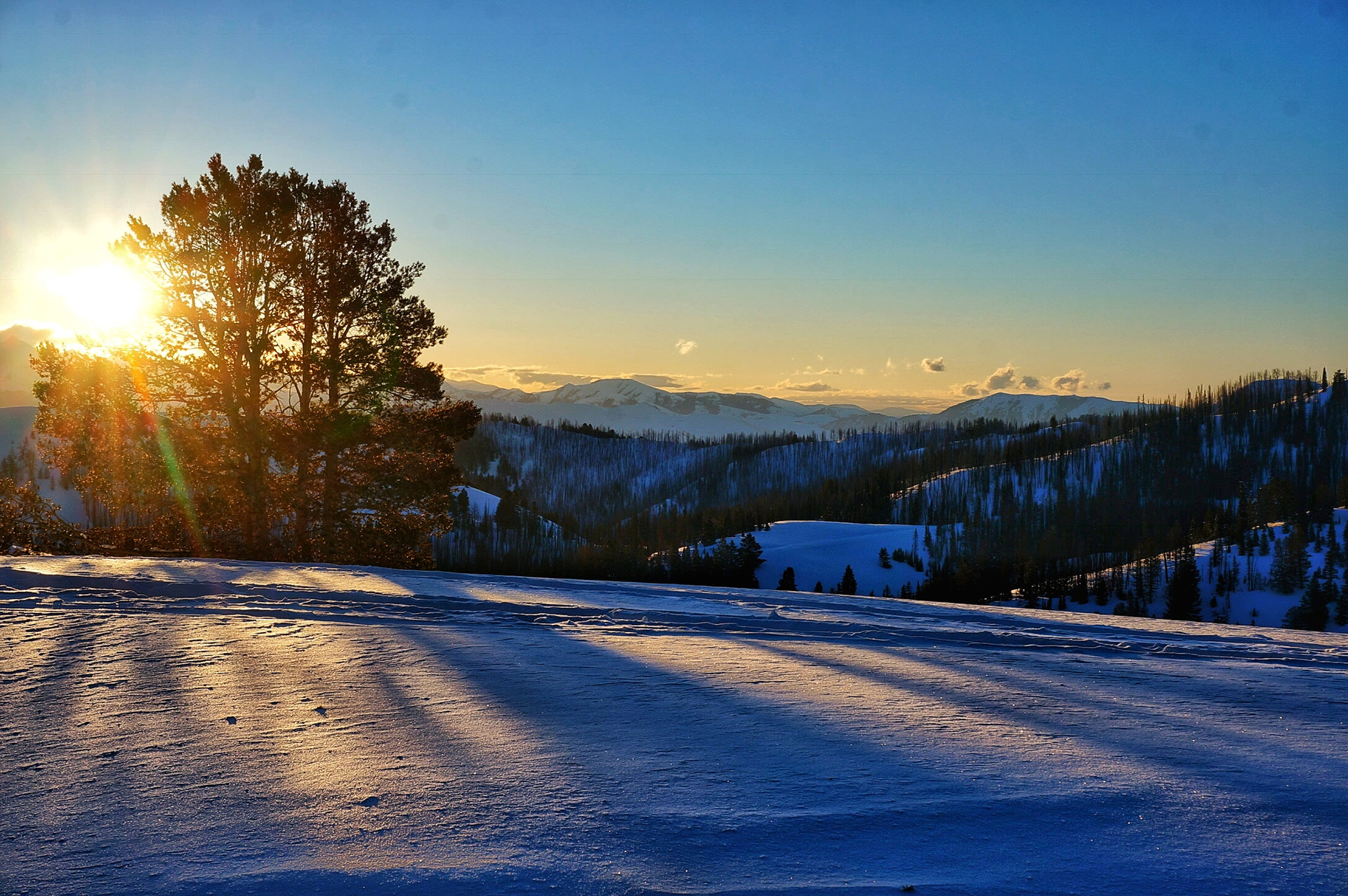
Photo courtesy of Jim Schultz, MD
Day Two
Day two found us trip planning after another 25-40 cm. of fluffy new snow overnight. This made the avalanche risk assessment especially acute but also presented very inviting ski conditions. We climbed, floated down, climbed, fluffed down, climbed, and dove the deeps again and again, each run more fun than the last. Faces frozen into permanent grins, we stumbled back toward the hut only to be greeted by a hysterically panicked Joe playing one of two survivors of a party of five caught in an “avalanche.” Oh no! The dreaded “end-of-the-day-I-am-so-tired-why-do-they-do-this-to-us” scenario – in DiMM life surpassed only by the “4 A.M.-get-out-of-bed-we-have-a-lost-hiker-to-rescue-in-the-rain-on-a-cliff” scenario. We eventually dug out the “victims.” Lessons learned: don’t get so locked on your beacon signal you bypass the hand sticking out of the snow. Traumatic arrest rarely responds to resuscitative efforts (sorry, Jess!). Don’t dig avalanche debris with your hands (Jamie!).
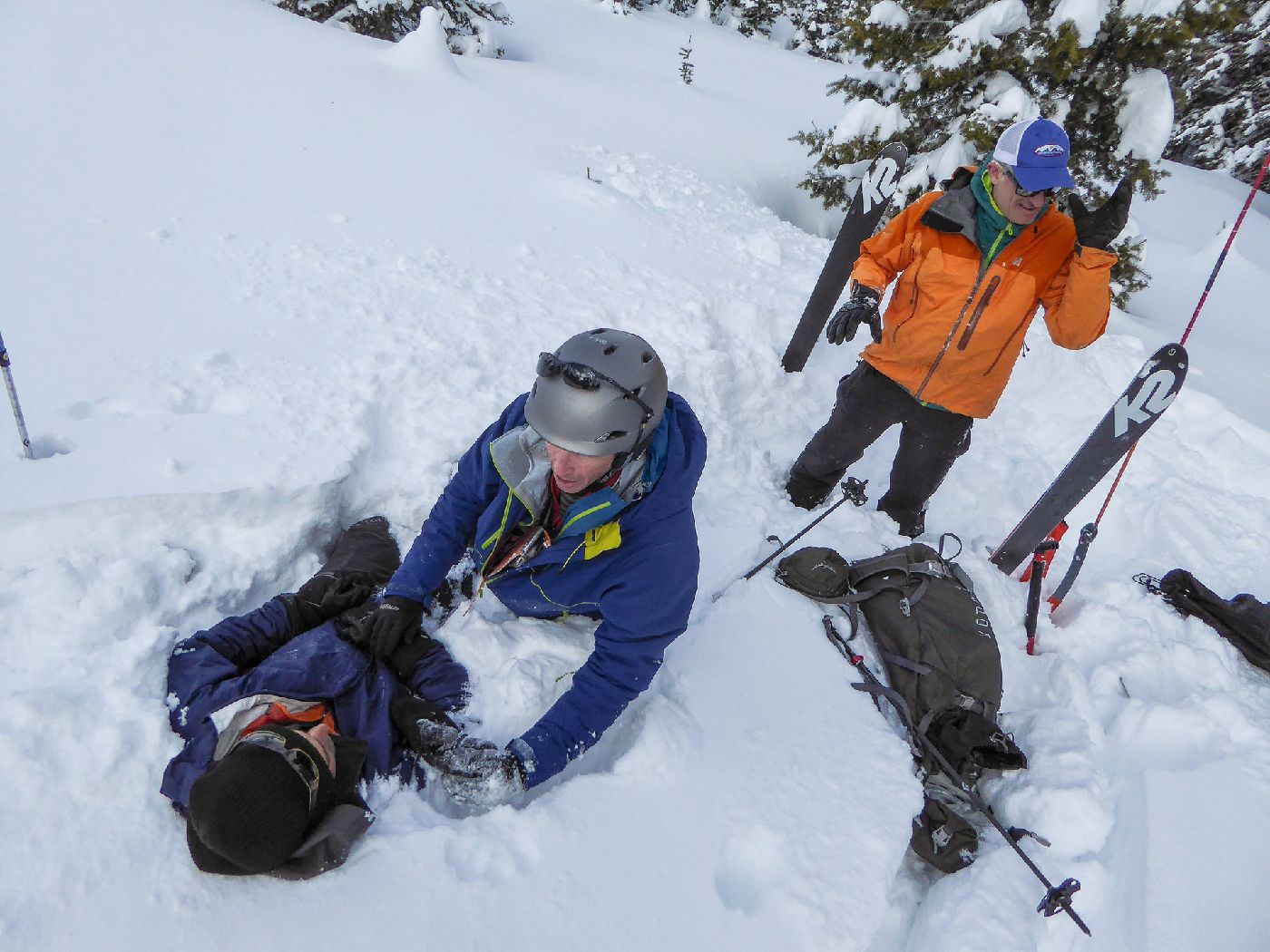
Photo courtesy of Chris Marshall from Sun Valley trekking
Day Three
Day three was the move from Tornak Hut to Coyote Yurt. Of course we didn’t just travel from Hut to Yurt – we skied up and down over and over again, resulting in attaining our daily vertical average of 3,500 feet or more. Even at our most tired, as we got tantalizingly close to the hut we allowed ourselves to be talked into, “One more run. We can stop halfway if you want.” Of course, after the first half we did NOT want to and ended up climbing the final steep hill to the Yurt twice. Scott McIntosh, DiMM Course Director, gave one of his nightly stellar lectures (sometimes given in the morning or at lunch on top of a sun-kissed mountain top). Our participative lectures covered topics such as hypothermia, frostbite, avalanche resuscitation, gastroenteritis, altitude illnesses, carbon monoxide poisoning, and of course avalanche assessment.
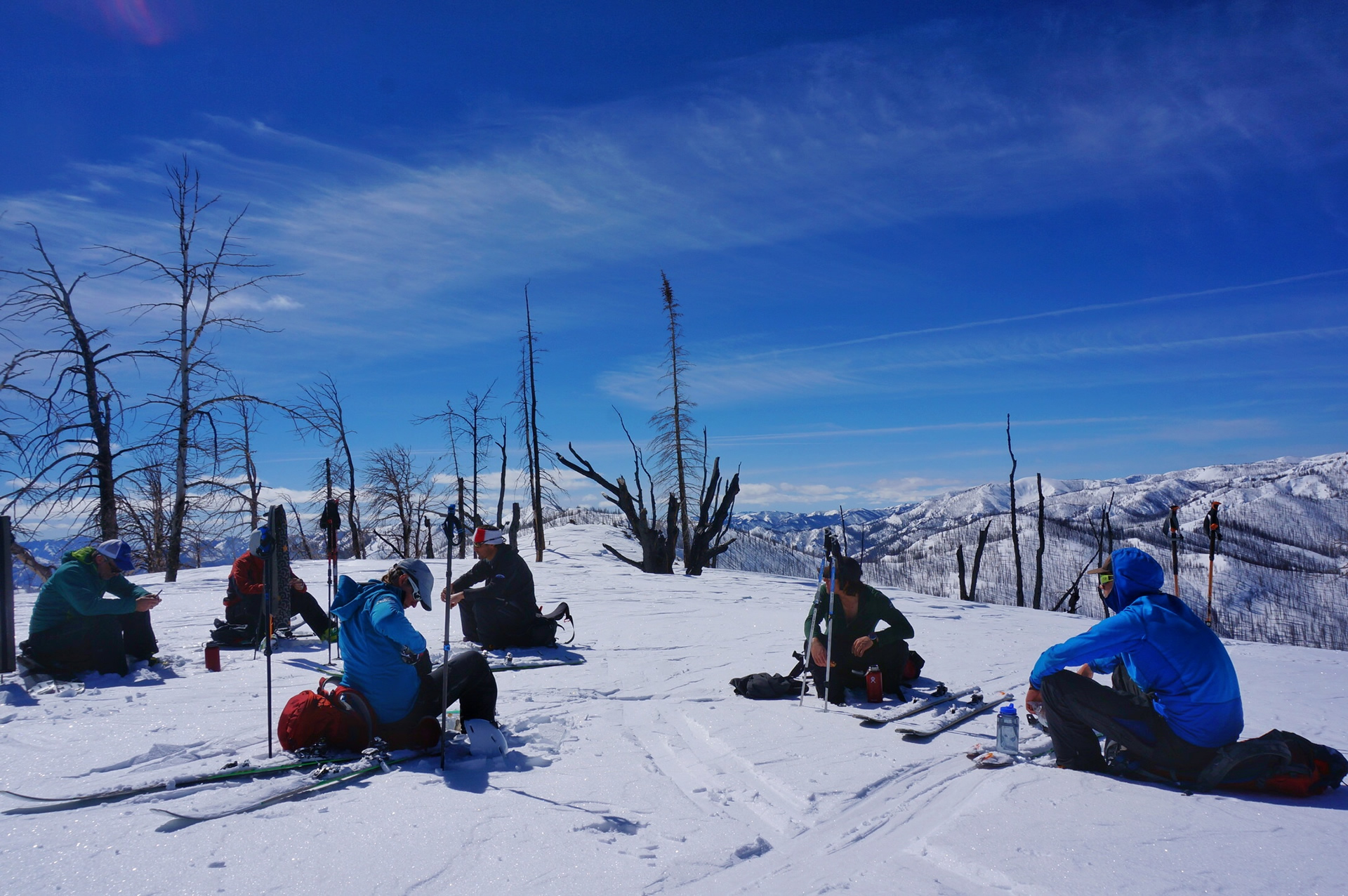
Photo courtesy of Jim Schultz, MD
Day Four
On day four we practiced with rescue tarps and making makeshift sleds in the hut before taking one great powder-shot run outside the Yurt (and, ugh, back up). We then built some improvised snow shelters. Most of the rest of the day consisted of patient packaging (sorry again Jess and Everett!!!) and setting up a technical low angle lower using minimal gear, followed by a side hill and flat haul (mush, dogs, mush!). Just for fun, we decided to bury our own Billy Martin in the snow to evaluate the effects of hypothermia while testing a core temperature device and getting a CME lecture from Scott. It was fun for everyone but Billy.
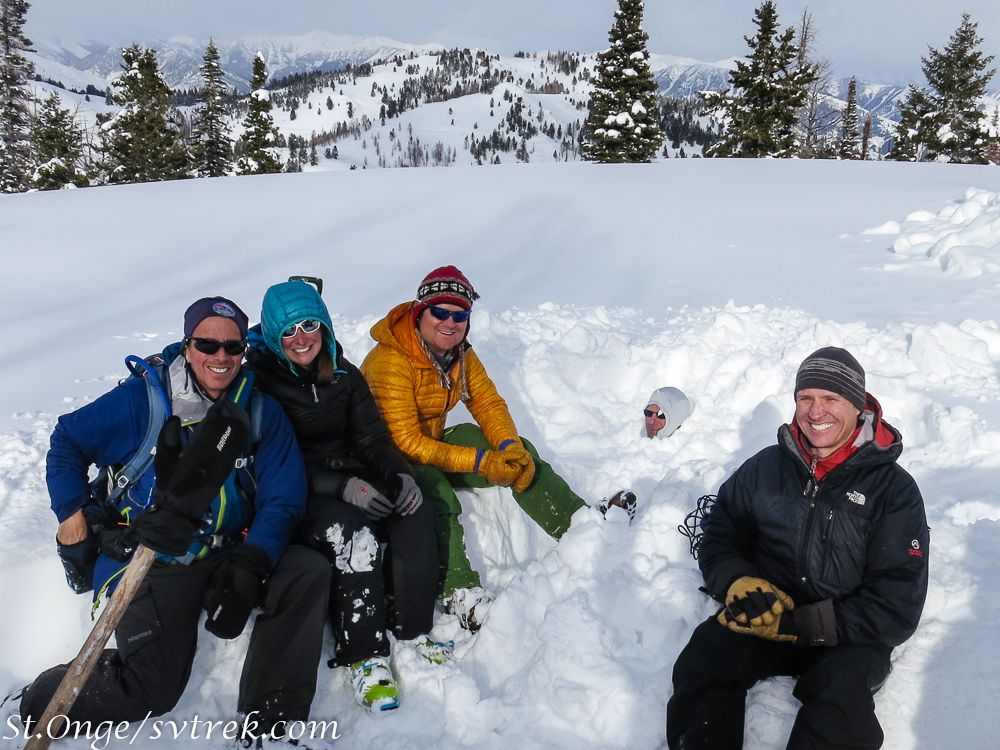
Photo courtesy of Chris Marshall from Sun Valley trekking
Day Five
Day five was OUR day. For the first time, each of us took a segment on the day’s tour and tour-planned (with good local knowledge input from Joe and Chris) and we led all of the legs of the tour. Risk mitigation, route finding, group management, efficient track setting – it was mostly on us. It felt for the first time like all the previous days’ lessons and experiences were coming together. Since it was St. Patrick’s Day, one might expect that some Jameson’s be tipped on this night with this crew. I have been sworn to secrecy on the matter.
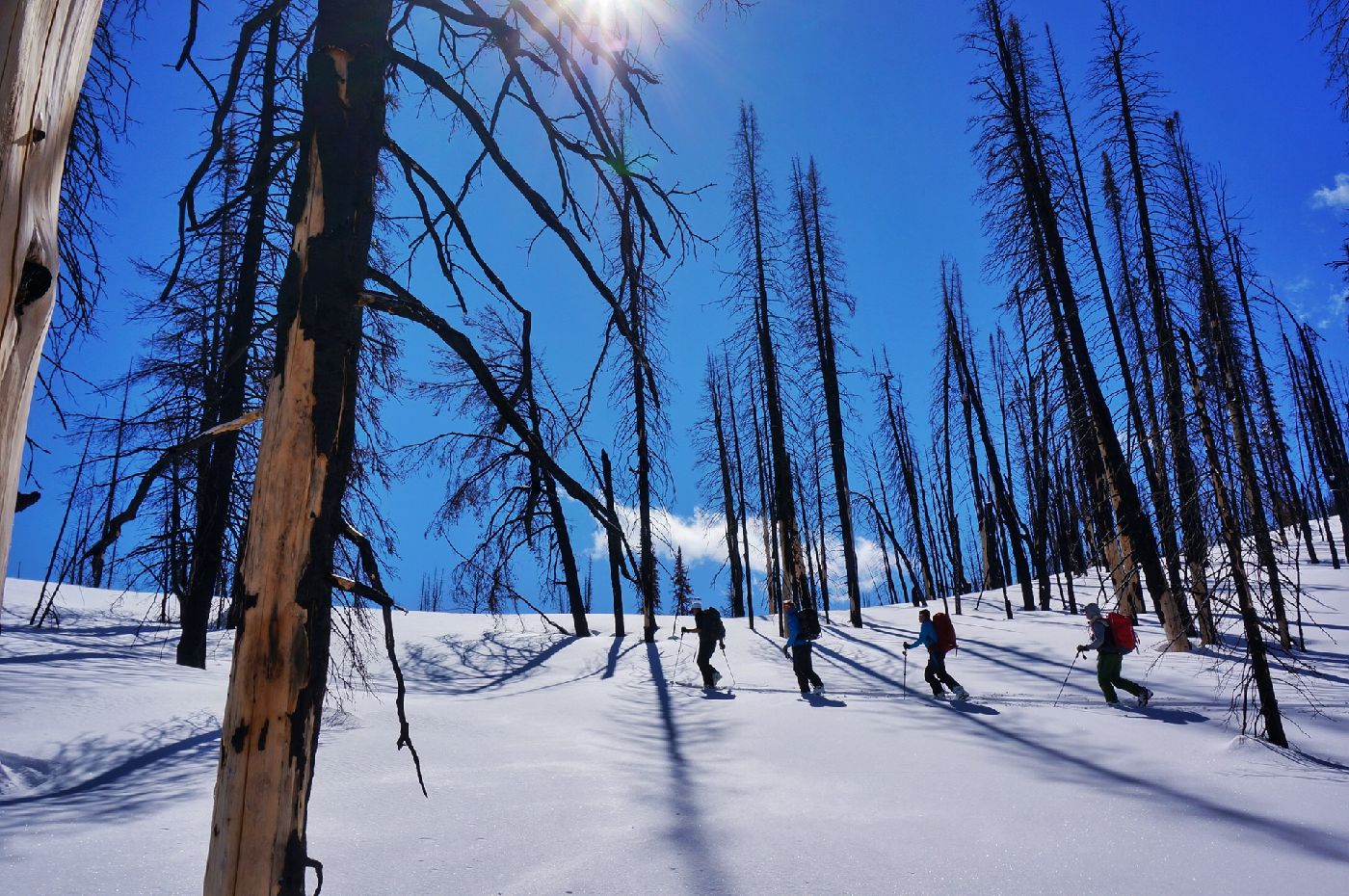
Photo courtesy of Jim Schultz, MD
Day Six
Day six arrived with a bright cold sun, and we realized that though we were anxiously anticipating a hot shower, we were nonetheless very reluctant to leave. We had become friends and family, learned about and from each other, engendered mad respect, had come to appreciate more the voice of the mountains, and had learned a bit more respect for them as well. We know more but we never know enough.
In keeping with the pattern, of course we did not just leave and go on the long downhill trek to the trailhead. Instead we headed in the opposite direction for some more laps. Eventually we made our longest downhill of the week and were hauled out the last three miles of flats by snow machine (cheating again!).
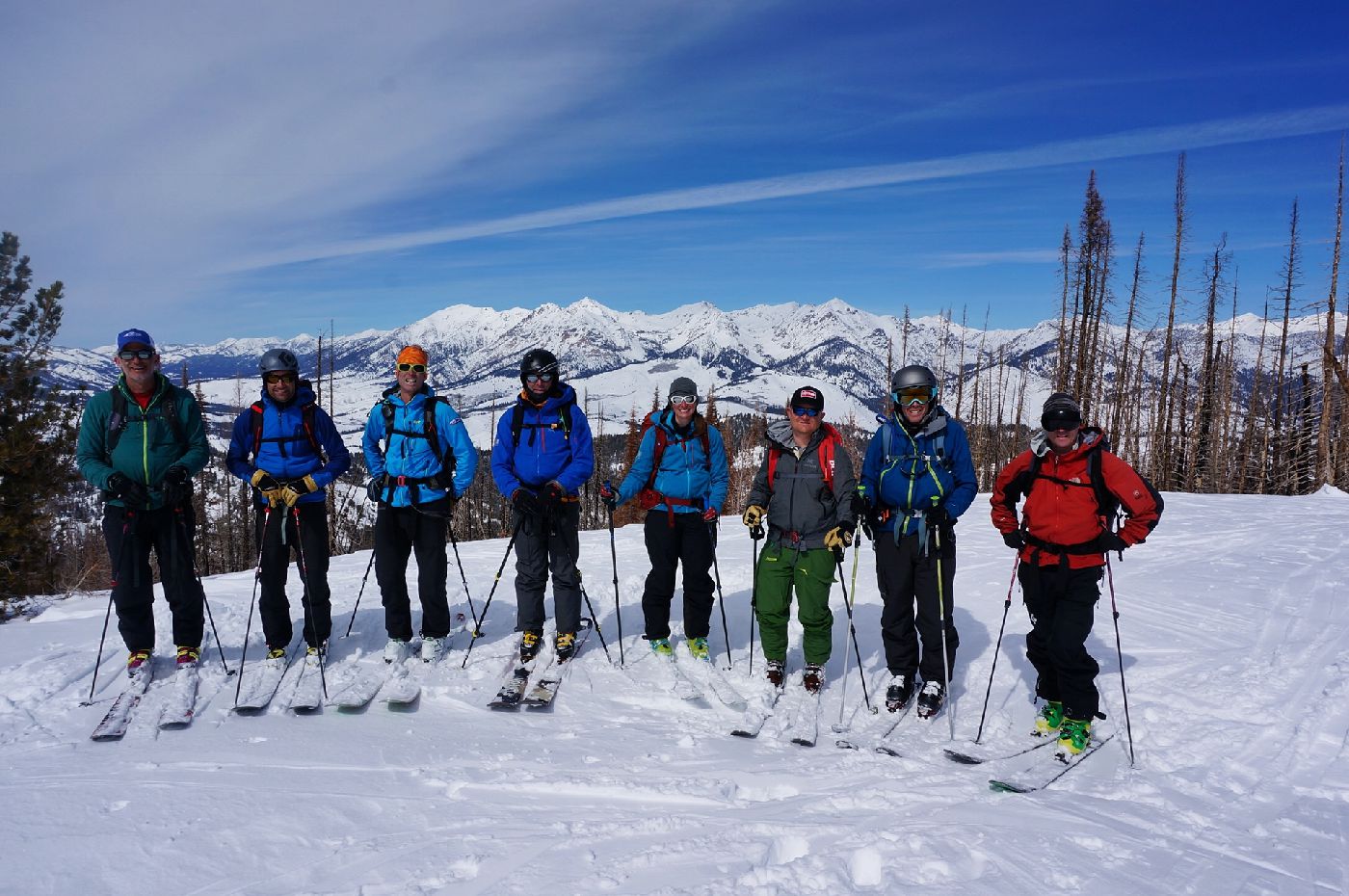
Photo courtesy of Jess from Sun Valley Trekking
As with everything else I have done with WMS, and especially with the DiMM program, at the end I felt exhausted yet invigorated and wanting more. The learning was again a “drinking-from-the-fire-hose” experience. I have new friends and new skills, and memories that I will cherish for a lifetime. I hung out and hung in with people that have done some wild and crazy things, and are off for more – Denali Medical Rangers, serious big-wall climbers, Everest summiteers, teachers of the joys of the wilderness and wilderness medicine to residents and medical students, medical missionaries to Uganda, the Himalayas, India, and elsewhere. These people have been there and done that.